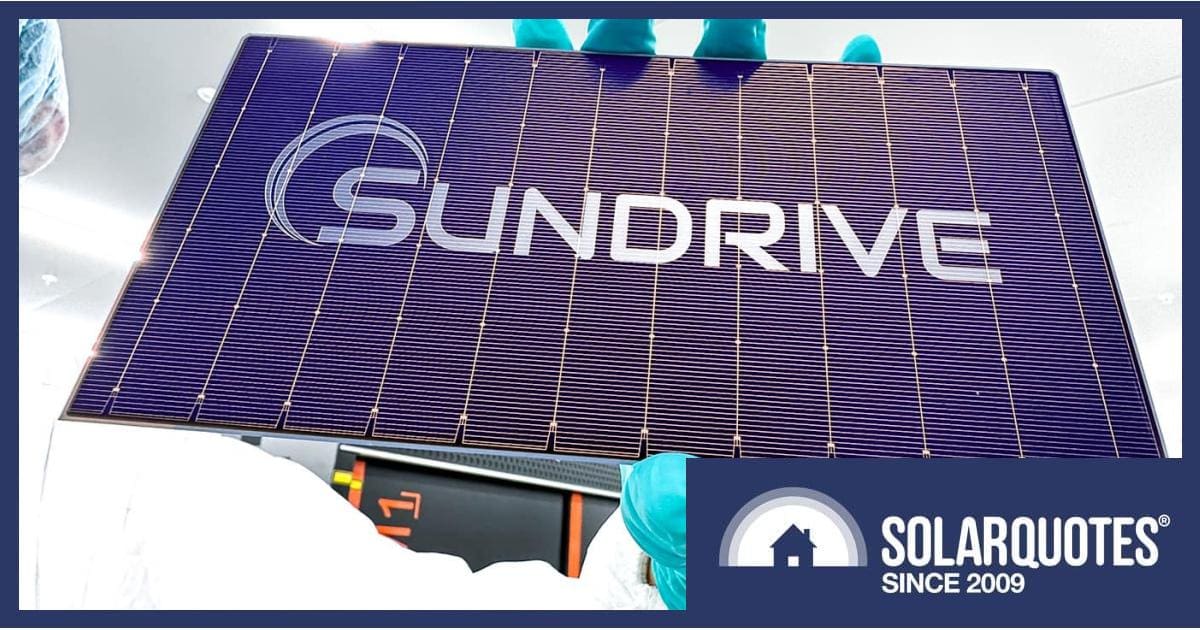Australian PV innovator SunDrive will lead an application for funding under the country’s Solar Sunshot program in a joint venture with China’s Trina Solar.
SunDrive has been developing technology to replace silver in PV cells with copper, which is a more abundant, efficient and cost-effective material. The firm’s first major claim to fame was manufacturing the world’s most efficient commercial-size silicon solar cell back in 2021.
SunDrive announced the signing of a Memorandum of Understanding (MoU) with AGL Energy Hubs in March this year to establish its first commercial-scale advanced manufacturing facility at AGL Hunter Energy Hub in Muswellbrook, New South Wales. But the project hinges on gaining sufficient Australian Government support to establish a large-scale facility.
In addition to that project, the company announced yesterday another MoU – this one with Chinese PV panel manufacturing goliath Trina Solar. Established in 1997, Trina has shipped more than 225 GW of solar modules worldwide and established an Australian presence in 2009. The two firms are well-acquainted through a technology collaboration arrangement in place since 2019.
“With SunDrive’s leading solar technology innovation and Trinasolar’s global manufacturing expertise and state-of-the-art n-type technology, this collaboration will enhance Australia’s ability to competitively produce high-quality solar products locally,” said SunDrive.
According to the company, the proposed facility in Sydney will create more than 300 skilled jobs and will reportedly have an annual production capacity of 1.2 gigawatts.
Solar Sunshot Support Needed
But key to establishing this plant is securing Solar Sunshot cash, a $1 billion program overseen by the Australian Renewable Energy Agency (ARENA) seeking to support the commercialisation of Australian solar photovoltaic innovations and to enhance local PV supply chains.
While Trina is involved and is a Chinese company, that in itself shouldn’t negatively impact the joint venture’s funding chances. Helping things along is SunDrive is already viewed as a fair-haired child by the Albanese Government.
The collaboration will result in a majority Australian-owned joint venture. According to eligibility criteria for Solar Sunshot, applicants must hold an Australian Business Number and be an Australian entity incorporated under the Corporations Act 2001. Each project must take place primarily in Australia, and co-funding commitments will play a role in application assessments. It’s not clear how much the JV is chasing or willing to co-contribute.
SunDrive Co-Founder & VP Partnerships, David Hu, said Trina is the “ideal choice” to work with to bring Australian-made solar panels to market at scale.
Commenting on the JV, Trina’s Edison Zhou said:
“Trinasolar has a long history in the Australian market and we’re excited to collaborate with SunDrive to bring world-class solar manufacturing to the region.”
While gaining positive international attention, it hasn’t been a smooth road for SunDrive. The company recently shed staff and made senior management changes to streamline operations.
Another firm that has previously indicated it will be taking a crack at Solar Sunshot funding is Australia’s only local panel manufacturer already supplying the market, Tindo Solar. Tindo recently took the wraps off its new line of panels, the Walara, and has committed to integrating Australian-made components into its modules.
Applications for Round 1A ($500 million) to support solar PV manufacturing innovation are due on 10 December 2024, with full applications due on 30 April 2025. Applications for Round 1B ($50 million) that provides funding for manufacturing studies are due on 2 November 2025.


 RSS - Posts
RSS - Posts



Governments picking winners. Now there’s a kiss of death. And heck, it’s only $1,000,000,000 of taxpayer money + the public service salaries to administer the scheme.
And just a quick numbers comparison…
Trina 225GW of panels already shipped.
Proposed facility 1.2GW of panels annually.
So Trina gets access to proprietary technology at the bargain price of supporting a tiny (for them) manufacturing facility.
And solarquotes as the most reputable solar quoting web site in Australia gushes praise over it all?
I thought it was a pretty objective post. Please don’t shoot the messenger. It’s important news.
Personally I think manufacturing PV in Australia makes no sense.